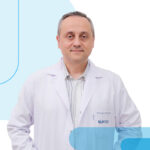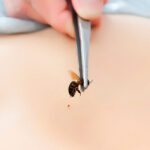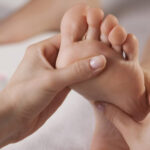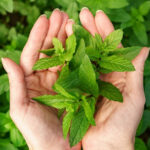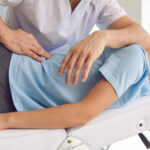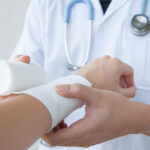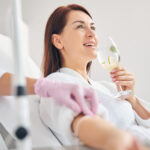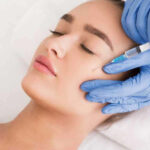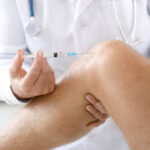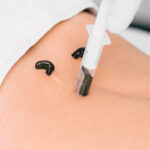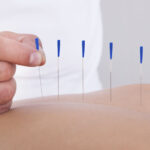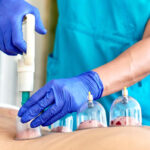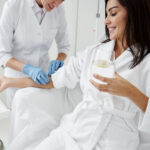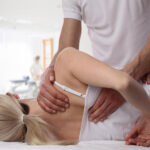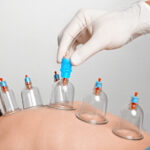Burtom ‣ Departments ‣ Traditional and Complementary Medicine
Language: 🇬🇧 English | 🇹🇷 Türkçe

Traditional and Complementary Medicine Overview

Traditional and Complementary Medicine (T&CM) is a diverse and integrated approach to health and well-being that combines traditional healing practices with modern medical interventions. This inclusive system encompasses a wide range of therapies, such as acupuncture, herbal medicine, mindfulness, and yoga, alongside conventional medical treatments. T&CM emphasizes individualized care, focusing on the physical, mental, and emotional aspects of health for a holistic and patient-centered approach. This integrative model seeks to enhance overall wellness, acknowledging the value of both traditional and modern healing practices.
Key Functions of an Traditional and Complementary Medicine

The key functions of Traditional and Complementary Medicine (T&CM) include:
Holistic Assessment:
- Conducting comprehensive evaluations that consider physical, mental, and emotional aspects to understand the individual’s overall health.
Integrative Treatment Plans:
- Developing personalized treatment plans that integrate traditional healing practices with conventional medical approaches to address various health concerns.
Patient-Centered Care:
- Prioritizing individual needs and preferences, fostering a collaborative relationship between practitioners and patients.
Prevention and Wellness Promotion:
- Emphasizing preventive measures and lifestyle modifications to enhance overall well-being and reduce the risk of illnesses.
Education and Empowerment:
- Providing education to empower individuals with knowledge about traditional and complementary therapies, enabling them to make informed decisions about their health.
Cultural Sensitivity:
- Acknowledging and respecting diverse cultural practices, ensuring that treatments align with individual beliefs and values.
Research and Evidence-Based Practices:
- Engaging in research to validate the effectiveness of traditional and complementary therapies, contributing to evidence-based practices in healthcare.
Mind-Body Integration:
- Recognizing the interconnectedness of mental and physical health, incorporating mind-body practices such as meditation and mindfulness into treatment plans.
Collaboration with Conventional Medicine:
- Working collaboratively with conventional healthcare providers to ensure a complementary approach that maximizes therapeutic benefits.
Accessibility and Affordability:
- Striving to make traditional and complementary therapies accessible and affordable, promoting inclusivity in healthcare options.
Safety and Regulation:
- Adhering to safety standards and regulatory guidelines to ensure the responsible and ethical practice of traditional and complementary therapies.
Long-Term Wellness Strategies:
- Developing long-term strategies for maintaining wellness, focusing on sustainable lifestyle changes and preventive measures.
These key functions collectively define the role of Traditional and Complementary Medicine in providing holistic, patient-centered care that integrates diverse healing traditions with modern medical practices for the benefit of individual well-being.
Situations within the scope of Traditional and Complementary Medicine

Traditional and Complementary Medicine (T&CM) finds application in various situations within the scope of healthcare, offering alternative approaches to conventional treatments. Some situations where T&CM may be considered include:
Chronic Pain Management:
- Acupuncture, herbal remedies, and chiropractic care can be explored as complementary options for managing chronic pain conditions.
Stress Reduction and Mental Health:
- Mind-body practices such as meditation, yoga, or mindfulness can be beneficial for stress reduction and mental health support.
Wellness Promotion:
- T&CM practices, including herbal supplements, dietary changes, and lifestyle modifications, can contribute to preventive healthcare and overall wellness.
Cancer Supportive Care:
- Complementary therapies like acupuncture, massage, and meditation may be integrated into cancer care to alleviate side effects and improve overall well-being.
Women’s Health:
- Herbal medicine, acupuncture, and traditional practices may be considered for managing women’s health issues such as menstrual disorders or menopausal symptoms.
Digestive Disorders:
- Herbal remedies, dietary changes, and traditional practices like Ayurveda may be explored for managing digestive issues.
Pregnancy and Childbirth:
- T&CM modalities such as acupuncture, prenatal yoga, or herbal supplements can be considered as supportive measures during pregnancy and childbirth.
Allergies and Immune Support:
- Herbal remedies and traditional practices may be used to support the immune system and alleviate symptoms of allergies.
Integrative Pain Management:
- T&CM approaches can be integrated into conventional pain management strategies to enhance overall effectiveness.
Sleep Disorders:
- Practices like aromatherapy, relaxation techniques, or herbal teas may be explored for managing sleep-related issues.
Rehabilitation and Physical Therapy:
- Complementary practices like acupuncture or tai chi may be considered to support rehabilitation and enhance physical therapy outcomes.
Chronic Health Conditions:
- T&CM can be explored as complementary options for managing chronic conditions such as diabetes, hypertension, or autoimmune disorders.
It’s crucial to approach the integration of Traditional and Complementary Medicine with collaboration between healthcare providers and an understanding of individual preferences and cultural considerations. Additionally, T&CM should complement conventional medical treatments, and decisions should be made in consultation with qualified healthcare professionals.
Patient Experience in the Traditional And Complementary Medicine

The patient experience in Physical Therapy and Rehabilitation is characterized by a patient-centered approach that focuses on holistic care, individualized treatment plans, and active collaboration between healthcare providers and patients. Here are key aspects of the patient experience in this specialty:
Comprehensive Assessment: Patients undergo a thorough assessment of their physical abilities, limitations, and specific needs, providing a foundation for personalized care.
Clear Communication: Open and transparent communication between the therapist and the patient fosters a collaborative and trusting relationship. Patients are actively involved in decision-making processes.
Individualized Treatment Plans: Treatment plans are tailored to each patient’s unique condition, goals, and preferences, ensuring a personalized approach to rehabilitation.
Empowerment Through Education: Patients receive education about their condition, the rationale behind treatment approaches, and strategies for self-management, empowering them to actively participate in their recovery.
Hands-On Therapeutic Techniques: Manual therapy techniques, exercises, and modalities are employed to address specific physical challenges and enhance overall well-being.
Progress Tracking: Regular assessments track progress, allowing for adjustments to treatment plans as needed to achieve optimal outcomes.
Pain Management: Therapists collaborate with patients to manage and alleviate pain through targeted interventions and strategies.
Motivational Support: Encouragement and motivation play a crucial role in the rehabilitation process, fostering a positive mindset and commitment to the prescribed exercises and activities.
Functional Training: Rehabilitation programs focus on real-life functional activities, ensuring that patients regain the ability to perform daily tasks and activities important to their lifestyle.
Home Exercise Programs: Patients are provided with home exercise programs, empowering them to continue their rehabilitation independently and maintain progress outside of clinic sessions.
Emotional Support: Emotional well-being is addressed as an integral part of rehabilitation, recognizing the emotional impact of physical challenges and providing support as needed.
Patient-Centric Environment: The rehabilitation setting is designed to be patient-friendly, fostering a comfortable and supportive environment for the duration of treatment.
Collaboration with Multidisciplinary Teams: Therapists collaborate with other healthcare professionals, such as physicians, occupational therapists, and speech therapists, to ensure comprehensive and coordinated care.
Rehabilitation Technology: Integration of cutting-edge rehabilitation technology enhances the patient experience, making exercises more engaging and providing objective data for tracking progress.
Empathy and Understanding: Therapists demonstrate empathy and understanding, acknowledging the challenges patients may face and providing encouragement throughout the rehabilitation journey.
Continuity of Care: Therapists focus on continuity of care, providing ongoing support and follow-up to monitor progress, address concerns, and make adjustments to treatment plans as needed.
Overall, the patient experience in Physical Therapy and Rehabilitation revolves around personalized care, empowerment, and a commitment to achieving optimal physical function and well-being.
Conclusion

In conclusion, Traditional and Complementary Medicine (T&CM) offers a holistic and patient-centered approach to healthcare, integrating traditional healing practices with modern medical interventions. This comprehensive model emphasizes personalized care, cultural sensitivity, and collaboration between practitioners and patients. T&CM addresses the interconnectedness of physical, mental, and emotional well-being, empowering individuals to take an active role in their health journey. By combining evidence-based treatments with alternative therapies, T&CM aims to enhance overall wellness, prevent illness, and improve the quality of life for patients. As part of an integrative healthcare system, T&CM contributes to a more inclusive and diversified approach to healthcare delivery, fostering a deeper understanding of health and healing across diverse populations and cultures.
Medical Devices Used in the Traditional and Complementary Medicine

Medical devices used in Traditional and Complementary Medicine (T&CM) vary depending on the specific therapies and practices involved. While T&CM often incorporates non-invasive and manual techniques, there are also medical devices utilized to support certain treatments. Some examples include:
Acupuncture Needles: Fine needles used in acupuncture therapy to stimulate specific points on the body.
Electroacupuncture Devices: Devices that deliver low-frequency electrical currents through acupuncture needles for enhanced stimulation.
Cupping Sets: Sets of cups used in cupping therapy to create suction on the skin, promoting blood flow and relieving muscle tension.
Moxibustion Devices: Devices that heat dried mugwort (moxa) to apply heat to acupuncture points or specific areas of the body.
Herbal Vaporizers: Devices used to inhale herbal vapors for aromatherapy or respiratory conditions.
Massage Tools: Various massage tools such as rollers, stones, and handheld devices used in massage therapy.
Biofeedback Devices: Devices used to measure physiological responses and provide feedback for mind-body practices such as meditation and relaxation techniques.
Far-Infrared Therapy Devices: Devices that emit far-infrared radiation for therapeutic purposes, often used in heat therapy.
Light Therapy Devices: Devices that emit specific wavelengths of light for phototherapy, including LED light therapy devices.
Bioelectromagnetic Therapy Devices: Devices that deliver electromagnetic fields for therapeutic purposes, such as pulsed electromagnetic field (PEMF) devices.
Ultrasound Therapy Devices: Devices that use ultrasound waves for therapeutic purposes, often used in physiotherapy and pain management.
TENS Units: Transcutaneous electrical nerve stimulation (TENS) units used to deliver electrical impulses for pain relief.
Ion Detox Foot Baths: Devices used in detoxification therapies that create an electrolysis reaction in water to purportedly draw out toxins through the feet.
Herbal Infusion Devices: Devices used to prepare herbal infusions or teas for consumption as part of herbal medicine practices.
Diagnostic Devices: Various diagnostic devices such as pulse oximeters, thermometers, and blood pressure monitors may be used for health assessments in T&CM practices.
It’s important to note that the use of medical devices in T&CM should be supervised by qualified practitioners and used in conjunction with appropriate training and guidelines to ensure safety and efficacy. Additionally, regulatory standards may vary depending on the country or region.
Areas of interest

Get a Free Second Opinion
Experienced Burtom Medical Team is Ready to Help

I consent to Burtom Health Group using my aforesaid personal data for the purposes described in this notice and understand that I can withdraw my consent at any time by sending a request to info@burtom.com.


